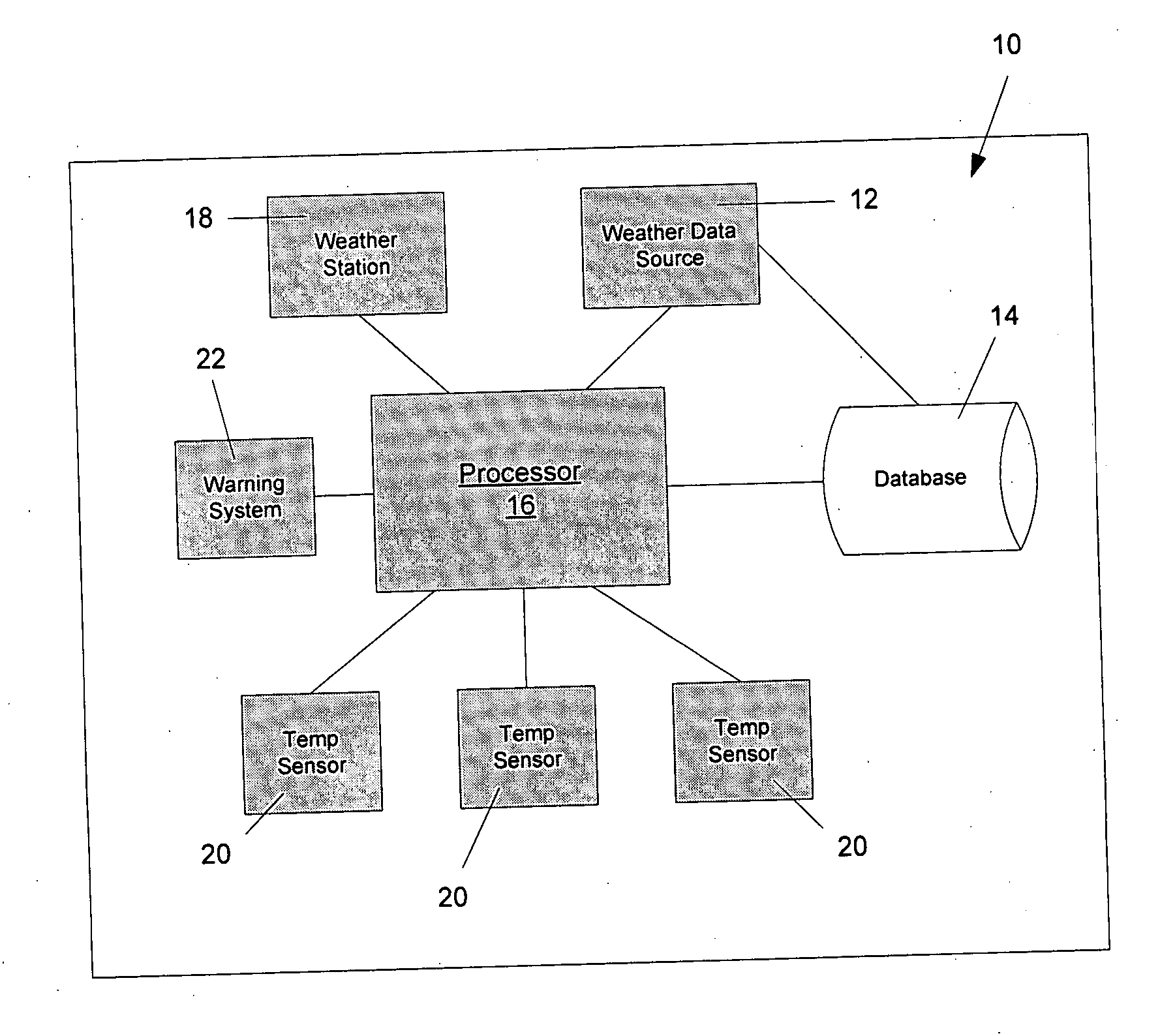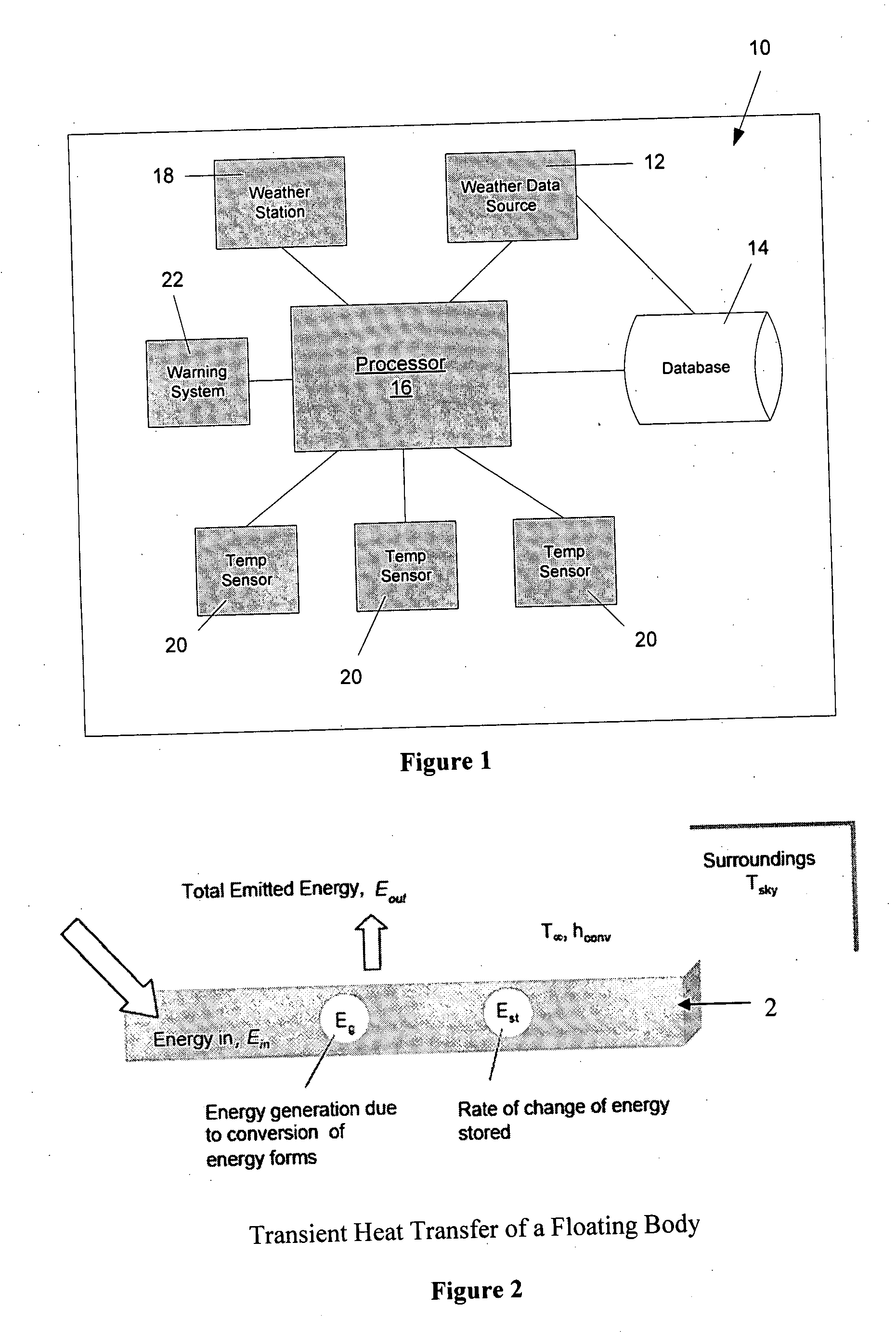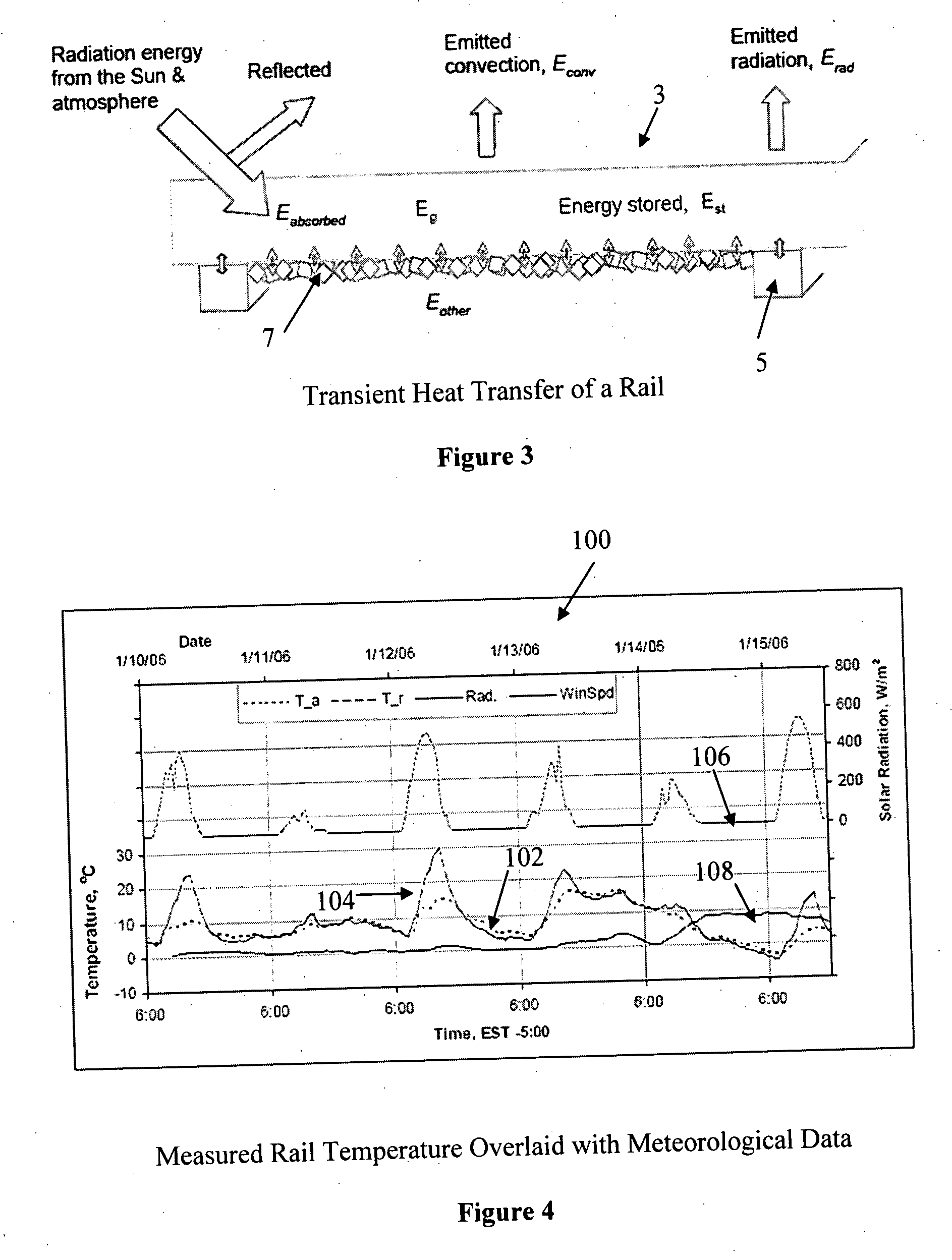System and method for predicting future rail temperature
a technology of meteorological data and forecasting system, applied in the direction of heat measurement, instruments, rope railways, etc., can solve the problems of slow orders, low accuracy, and relatively high probability of rail buckling, so as to add cost to railroad operations and ensure accuracy
- Summary
- Abstract
- Description
- Claims
- Application Information
AI Technical Summary
Benefits of technology
Problems solved by technology
Method used
Image
Examples
Embodiment Construction
[0031]FIG. 1 shows a schematic illustration of a rail temperature prediction system 10 in accordance with one preferred embodiment of the present invention that can be used to predict future rail temperature. As will be evident from the discussion below, the prediction system 10 of the present invention utilizes meteorological data to predict the rail temperature in the future, i.e. at a given future time, while accounting for heat transfer characteristics of the rail. This allows various important future rail temperature information to be determined such as whether at any or what time, the rail temperature will exceed the temperature at which the rail may buckle, and / or the maximum rail temperature will occur. This allows the railroad companies to objectively, and more accurately, issue slow train operation orders so as to facilitate efficient utilization of the railroad, while reducing issuance of unnecessary slow orders.
[0032] As shown in FIG. 1, the rail temperature prediction ...
PUM
 Login to View More
Login to View More Abstract
Description
Claims
Application Information
 Login to View More
Login to View More - R&D
- Intellectual Property
- Life Sciences
- Materials
- Tech Scout
- Unparalleled Data Quality
- Higher Quality Content
- 60% Fewer Hallucinations
Browse by: Latest US Patents, China's latest patents, Technical Efficacy Thesaurus, Application Domain, Technology Topic, Popular Technical Reports.
© 2025 PatSnap. All rights reserved.Legal|Privacy policy|Modern Slavery Act Transparency Statement|Sitemap|About US| Contact US: help@patsnap.com



